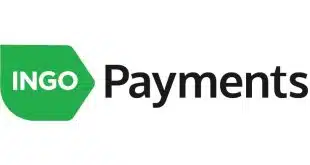The rise of mobile phones in South Asia, Africa, and Latin America is bringing many benefits to lesser-developed countries, but the simultaneous rise of mobile banking is creating new opportunities for money laundering, according to a report released Friday by the U.S. Department of State's Bureau of International Narcotics and Law Enforcement Affairs. And having a highly developed, high-tech economy is no guarantee that a country has effective controls against transferring illicit money via mobile phones, according to the report. “The United States currently has few safeguards against abuse of m-payments,” the report says. While noting that American mobile-payment service providers must register with the Financial Crimes Enforcement Network, or FinCen, the report also says that, “however, most money service businesses do not comply with registration requirements and there is little enforcement of the regulations.” The report singles out the Philippines as one country with better controls than most on money laundering via cell phones. There, cell-phone carriers have worked closely with the country's central bank and financial fraud investigators, according to the State Department. Following “know-your-customer” policies, an authorized subscriber must register in person with the service provider and present valid photo identification to either put cash in or take cash out of the system, the report says. Philippines law also puts limits on electronic money transfers. The maximum a subscriber can transfer at one time is 10,000 pesos ($247), or a maximum of 40,000 pesos ($990) a day and 100,000 pesos ($2,475) per month. These regulations and limits, however, do not eliminate the vulnerabilities that false identification and fraudster-controlled networks pose, the report says. The basics of m-commerce fraud are similar across international borders. In traditional money laundering, criminals often deposit illicit money in banks in amounts small enough not to trigger a review under a country's banking regulations. Today, so-called “digital smurfs” will use illicit money to buy prepaid cards or credits from telecommunications companies. After that, they can send money via text message to the cell phones of recipients using existing mobile-banking channels, recipients who may be criminal partners. The recipient goes to a licensed outlet, store, or even a fast-food restaurant to pick up the cash or use the credit. For example, according to the report, in a restaurant the patron connects to the cash register with his or her cell phone, enters a PIN, and authorizes payment. The chapter about mobile payments in the report posted on the State Department's Web site does not give an estimate of the amount of this new type of electronic money laundering, but says mobile-phone-based fraud “represents a very serious threat.”
Check Also
Mobile Wallets And Payment Apps Are Favored for Different Uses, an Onbe Survey Finds
Diners visiting a fast-casual restaurant—think Chipotle, Five Guys—are more likely to choose a mobile wallet …







